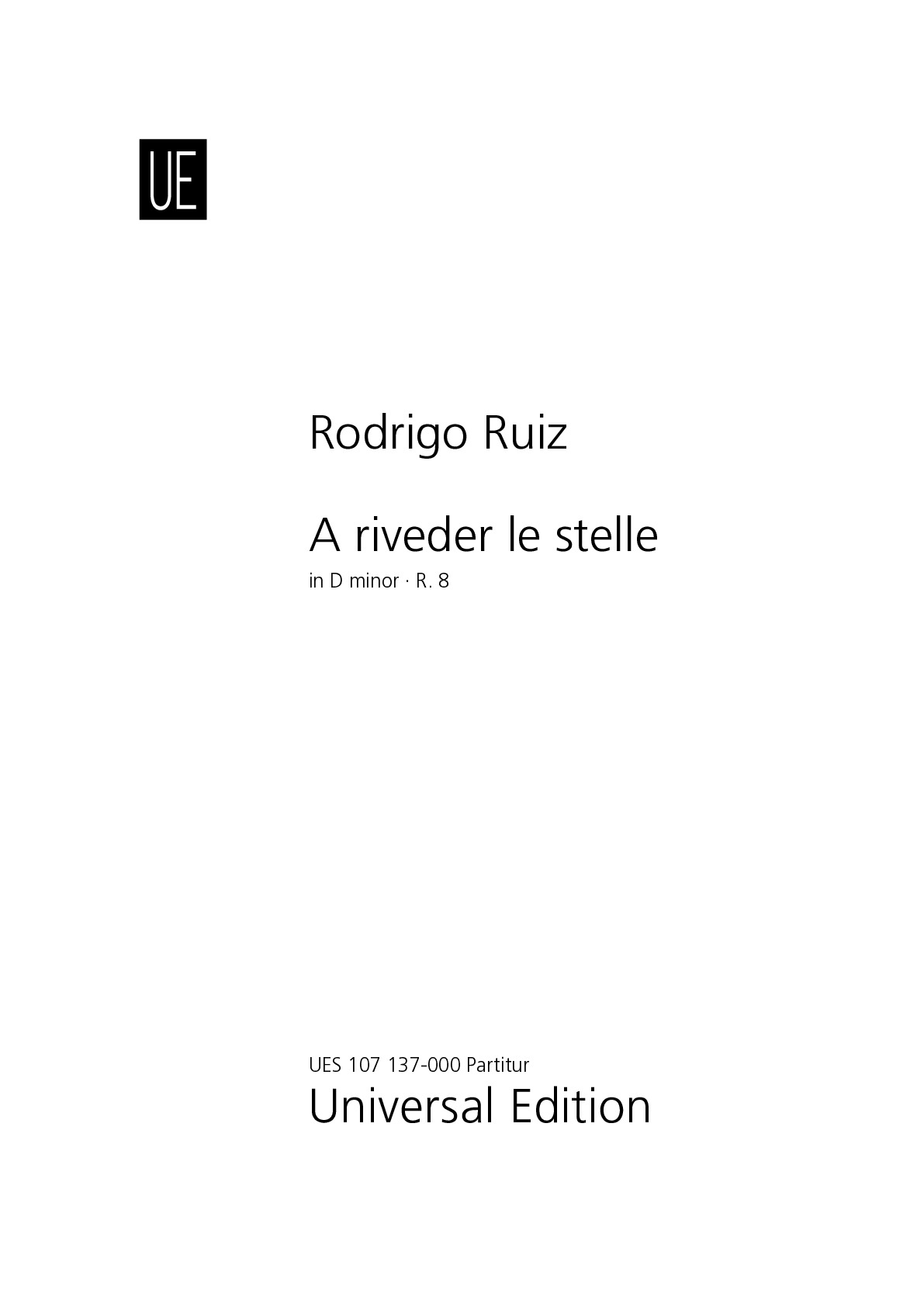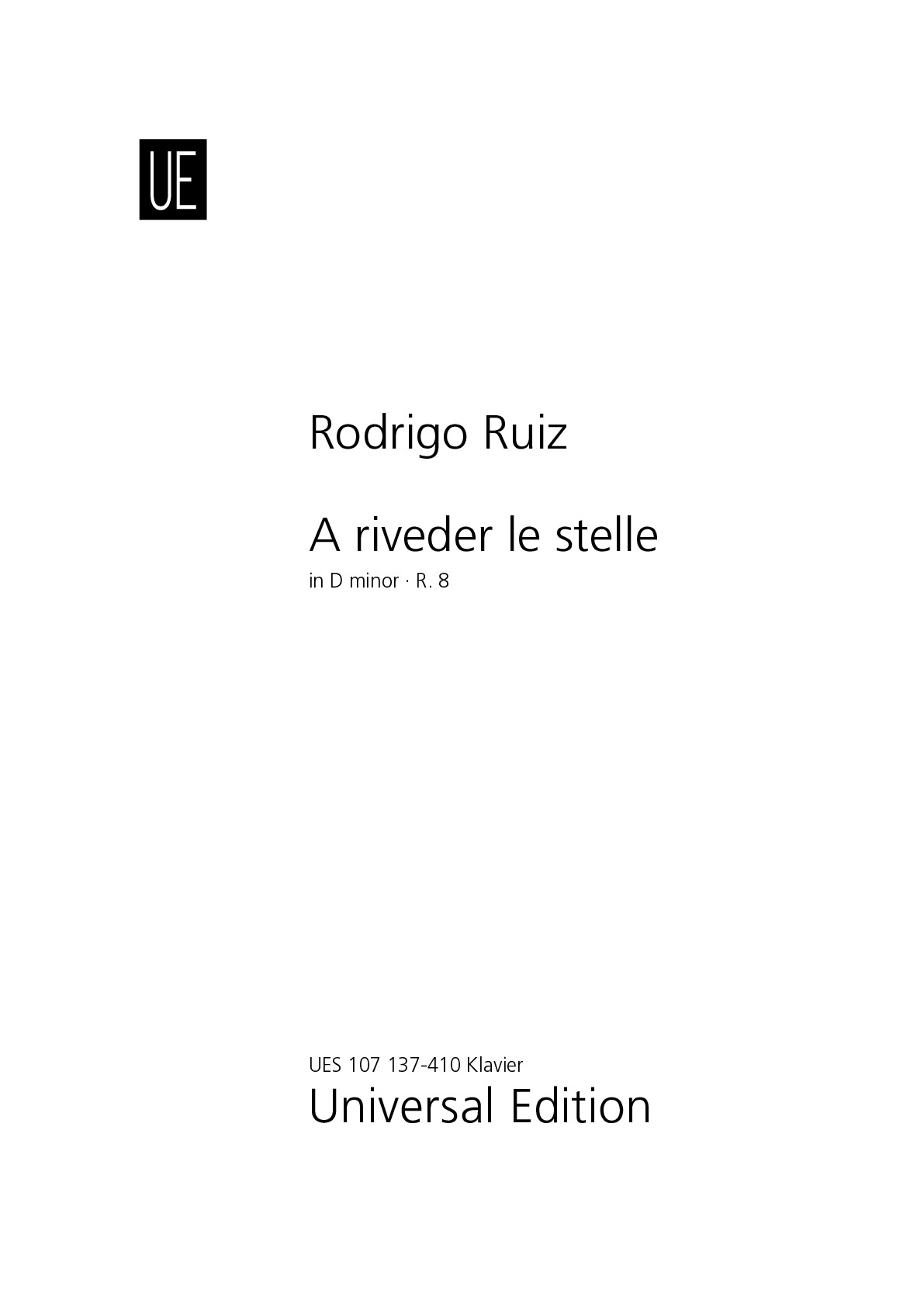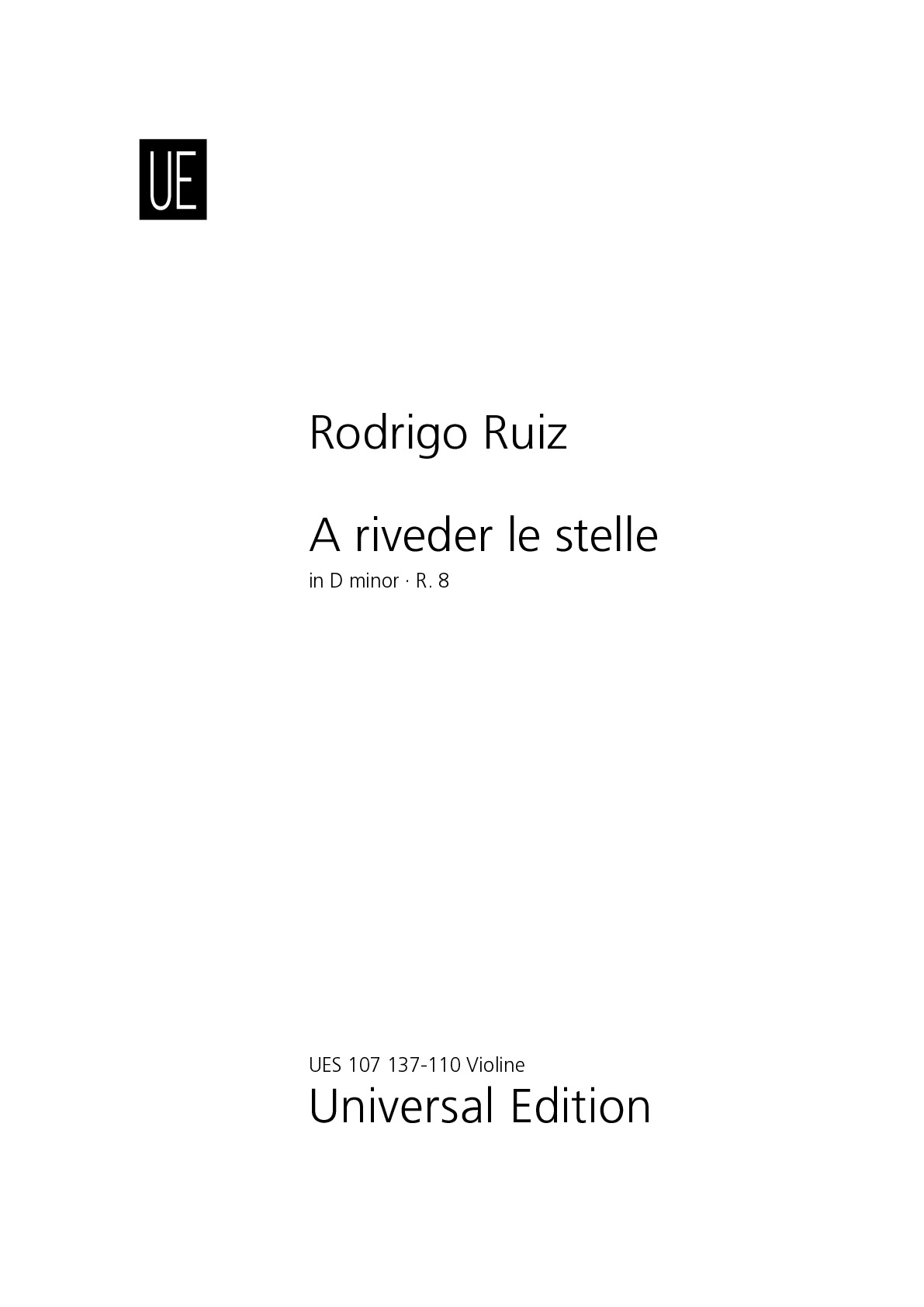

Rodrigo Ruiz
A riveder le stelle
Duration: 8'
Instrumentation details:
piano
violin
A riveder le stelle
Sample pages
Audio preview
Work introduction
I had been exploring possible concepts for a new work for violin and piano, but nothing had yet convinced me. It would have to be, by Kerenza Peacock’s petition, a short piece that would satisfy the need to expand the violin repertoire, which is plentiful in sonatas and concerti but wanting in shorter individual pieces. One day, I unexpectedly found the concept I was looking for. As I reread the ending to Dante Alighieri’s Inferno, it seemed to me an infernal choir sang the terrifying words that open hell’s last canto, announcing the inexorable approach of Lucifer’s standards. I listened more closely, willing myself to hear the chant in full. My efforts paid off: a short time after, the foundation of the work glowed fresh with ink before me, thus:
The work is full of musical allusions to the text. One of the most interesting ones is the moment when Dante, having used the King of Hell as a stair, looks back at Lucifer and sees him upside down. Virgil, his guide and master, explains to the perplexed Dante the reason: they had just passed the center of the globe. This gave me the idea that eventually became the Misterioso passage (b. 67). I inverted the Vexilla regis theme on its head and place it in counterpoint with the theme that first appears in its full form at b. 39 with the preso ‘l pont effect of the violin —we’ll call this the ponticello theme. These two themes already appear in counterpoint at the Infernale (b. 43) where the violin plays the ponticello theme in multiple stops while the Vexilla regis roars in piano left-hand octaves. Here, however, they are both played on the string instrument and cross over each other, ending heads over tails.
The jeté at b. 77 represents a little pebble Dante accidentally kicks in the dark when Virgil and himself resume their walk through the bowels of the earth, walking up the passageway that will eventually lead them to behold the stars again.
This short, eight-minute work is full of such details (some more obvious, some less), but beyond the madrigalisms and imagery the overall sense I wish the listener to remain with is the refreshing liberation that Dante experiences when he breathes that fresh air after having spent God knows how long in those ungodly pits of fire, ice and self-inflicted suffering.
Rodrigo Ruiz
Playa del Carmen, Mexico
23 April 2024
What is necessary to perform this work?
In order to perform this work you will need a copy each of the score and the violin part.



